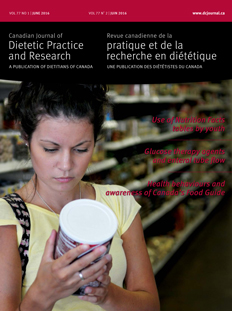Abstract
Purpose: To describe body composition (fat mass (FM) and fat-free mass (FFM)), strength, and nutritional characteristics of patients with hip or knee osteoarthritis undergoing total joint arthroplasty.
Methods: In this prospective pilot study, osteoarthritic patients underwent body composition assessment using bioelectrical impedance analysis, grip strength measurement, and completed a 24-h dietary recall during their pre-operative assessment.
Results: Fifty-five patients were included (∼66% females, age 43–89 years). Mean ± SD body mass index (BMI) was 32.79 ± 6.48 kg/m2 and 62% were obese. Compared with hip osteoarthritis patients, knee osteoarthritis patients had a higher BMI (P = 0.018) and males with knee osteoarthritis had a lower grip strength (P = 0.028). There was a wide range in FM and FFM values across the BMI spectrum. Patients with a higher FM index (FMI, FM/height in m2) had higher levels of pain (P = 0.036) and females with higher FMI had a lower grip strength (P = 0.048). Dietary under-reporting was common and many patients did not meet recommendations for protein, vitamins C and E, or omega-3 fatty acids. Those who consumed less protein than the recommended dietary allowance were older (P = 0.018).
Conclusions: A wide variability of body composition and dietary intake was observed which may impact strength and ultimately affect physical function. As such, patients with osteoarthritis may benefit from targeted nutrition and physical activity interventions before and after surgery.
Résumé
Objectif. Décrire la composition corporelle (masse adipeuse [MA] et masse maigre [MM]), la force et les caractéristiques nutritionnelles des patients atteints d’arthrose des genoux ou des hanches subissant une arthroplastie totale des articulations.
Méthodes. Dans le cadre de cette étude pilote prospective, des patients atteints d’arthrose ont été soumis à une évaluation de la composition corporelle comportant une analyse de l’impédance bioélectrique et à une mesure de la force de préhension. Ils ont également réalisé un rappel diététique des 24 h pendant leur évaluation préopératoire.
Résultats. Cinquante-cinq patients ont participé à cette étude (environ 66 % de femmes, patients âgés de 43 à 89 ans). La moyenne ± l’écart-type de l’indice de masse corporelle (IMC) était de 32,79 ± 6,48 kg/m2, et 62 % des patients étaient obèses. Comparativement aux patients souffrant d’arthrose des hanches, les patients souffrant d’arthrose des genoux avaient un IMC plus élevé (P = 0,018), et les hommes ayant de l’arthrose des genoux avaient une force de préhension plus faible (P = 0,028). Les valeurs de la MA et de la MM variaient grandement sur le spectre de l’IMC. Les patients qui présentaient un indice de MA plus élevé (IMA, MA/taille en m2) avaient des niveaux de douleur plus élevés (P = 0,036), et les femmes présentant un IMA plus élevé avaient une force de préhension plus faible (P = 0,048). La sous-déclaration de l’apport alimentaire était fréquente, et de nombreux patients ne satisfaisaient pas aux recommandations pour les protéines, les vitamines C et E, ou les acides gras oméga-3. Les patients qui consommaient moins de protéines que l’apport nutritionnel recommandé étaient plus âgés (P = 0,018).
Conclusions. Une grande variété de compositions corporelles et d’apports alimentaires a été observée, ce qui peut avoir une incidence sur la force et ultimement affecter les fonctions physiques. Ainsi, les patients souffrant d’arthrose pourraient tirer avantage d'interventions ciblées concernant la nutrition et l'activité physique avant et après la chirurgie.



